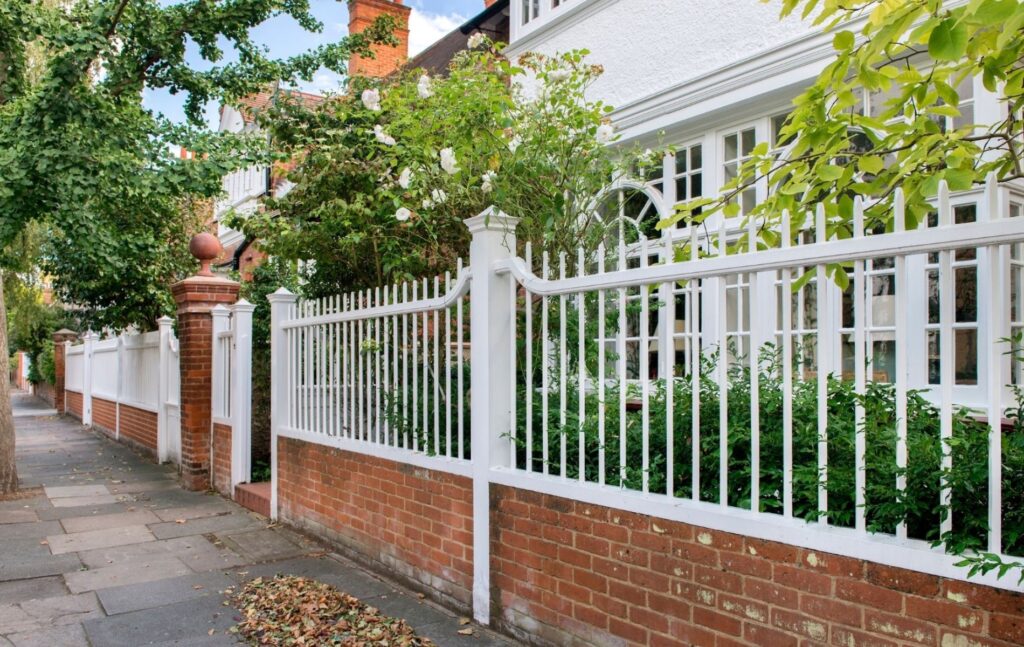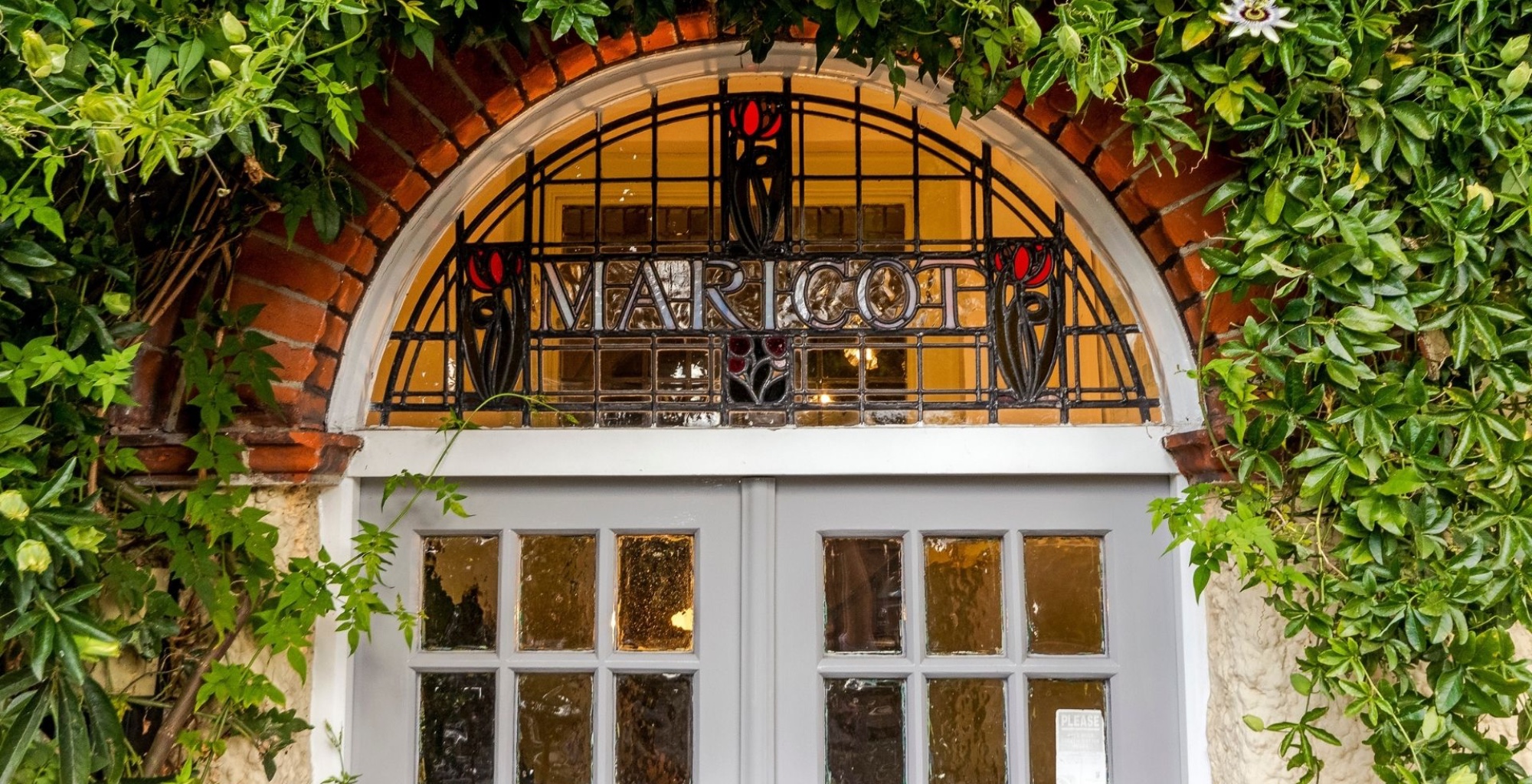Thinking of living in Bedford Park Garden Suburb, Chiswick?
If you are living in Chiswick or have a keen interest in architecture, textiles or design it’s likely you’ll know of Bedford Park. Bedford Park is described as the world’s first garden suburb, its creation was a model that many planners sought to emulate in the Garden city movement and in suburban developments around the globe.
Bedford Park is a desirable place to live in Chiswick, where the leafiness, the peace and calm, and the stunning period homes with generous gardens are all just a stone’s throw from the bustle of Chiswick High Road.
In this blog, we share information about this wonderful part of Chiswick, snippets of its rich history and highlight some of the reasons for moving to the first garden suburb and the benefits of living in Bedford Park.
WHERE IS BEDFORD PARK?
Located just to the north of Turnham Green Station, The Bedford Park conservation area runs from Abinger Road to the east, Esmond Road to the west, Flanders Road marks the area’s southern border and Fielding Road is officially the last road within the conservation area to the north. Just 23 roads make up the Bedford Park area.
Several roads to the west and north of the conservation area known as the Bedford Park borders such as Rusthall Avenue, Brookfield Road, Priory Road and others in the residential pocket between The Avenue, Southfield Road, Acton Lane and South Parade.
BRIEF HISTORY OF BEDFORD PARK
Located in West London, Bedford Park is an area of architectural interest due to it being known as the First Garden Suburb.
A cloth merchant called Jonathan Thomas Carr was the developer of Bedford Park, who had been inspired by the Aesthetic Movement of the 1870’s and wanted to create a ‘garden suburb’ which appealed to the artistically inclined who could no longer afford to live in more central locations like Chelsea.
The opportunity to purchase a 24-acre parcel of land next to the then relatively new Turnham Green Station, which had only been built 6 years earlier came about when Carr married Agnes, the daughter of civil engineer Hamilton Fulton, who lived in Bedford House and owned the land. Carr purchased the land in 1875 and set about planning the estate.
The appeal of the location was that the City of London was just 30 minutes away via steam train and there were many fine trees on the land – in order to protect these mature trees the informal street plan was laid out around them.
The initial architect was Edward William Godwin but when his plans came under criticism Carr commissioned some designs by the firm Coe and Robinson. Eventually, Carr hired Richard Norman Shaw in 1877, the leading architect of his day who went on to design Albert Hall Mansions and New Scotland Yard, though the layout had already been set, it was Shaw’s Queen Anne-style house design that determined the overall look and feel of Bedford Park.
PROPERTY IN BEDFORD PARK
Living in Bedford Park was the height of fashion in the 1880s. However, in the 20th century the area’s popularity declined.
Though the area’s popularity dwindled through the 20th century, The Bedford Park Society was formed in 1963 after the demolition of The Bramptons by Acton Council and through their efforts, the government listed a total of 356 houses in 1967.
A few years later, the local councils designated the conservation area protecting the garden suburb from change and maintaining its charm and character. Since then the properties in Bedford Park have been renovated, restored and extended to the houses they are now.
Most of the early developed building are classed as Grade II listed, and have stringent planning rules and restrictions. Alongside, house Bedford park trees located in the Bedford Park conservation area are protected.
The style and design vary depending on which road, in the southern part of Bedford Park on there are largely terraced homes such as those on Gainsborough Road. Many fine examples of detached homes can be found on Woodstock Road and on Queen Anne’s Gardens.

Bedford Park is known through history to have been a place where several notable artists, curators, actors and designers have lived such as curator Sir Sydney Carlyle Cockerell, actor William Terriss, stained glass artist Karl Parsons and artist Cecil Aldin.
Though the homes in Bedford Park largely carry Shaw’s distinctive design and style there are notable houses which are different yet represent an important part of the area’s history. Houses designed by Charles Francis Annesley Voysey such as 14 South Parade and others designed by Lindsay P. Butterfield; Maricot and the neighbouring house on Vanbrugh Road, are later additions to Bedford Park that further add to the character of the area.
Maricot, a stunning 6 bedroom detached house on Vanbrugh Road and built for Lindsay P Butterfield in 1906, is incredibly special due to the influences on the design and layout. Where many of the properties in Bedford Park have very separate spaces and rooms running off of corridors, the Arts & Crafts movement embraced openness where rooms had multiple aspects and were filled with light.
PLACES TO EAT AND DRINK
Amongst the many reasons this area is so incredibly popular is because of its proximity to Chiswick’s amenities.
The parades of shops, independent boutiques, restaurants and cafes nearest to Bedford Park include those at Bedford Corner and at Turnham Green.
Turnham Green Terrace is filled with boutiques, cafes, butchers and useful stores such as Macken Brothers butchers, Bayley & Sage delicatessen, Sam’s Larder and Hack and Veldt Delicatessen.
With Chiswick High Road being a 10 minutes’ walk away, residents in this exclusive enclave of W4 can enjoy the wide array of shops, restaurants, boutiques and pubs the highstreet has to offer, that are perfect to take you from lunch to evening drinks without having to leave the street.
SCHOOLS IN BEDFORD PARK
Those living in Bedford Park have several excellent schools in and around the area.
Exemplary state-run schools are within walking distance of the area, including Southfield Primary School and Wendell Park Primary School, alongside highly regarded, Good Shepherd RC Primary School.
Bedford Park also boasts top independent schools, including Orchard House School and The Chiswick & Bedford Park Preparatory School.
TRANSPORT LINKS
For transport Bedford Park is an incredibly well-connected location in W4; Turnham Green Underground Station (District line) is just minutes away, and Stamford Brook station (District line) is also close by.
Several bus routes run nearby such as the 94 which travels to Piccadilly Circus via Shepherd’s Bush and Notting Hill. By car, the A4 and M4 motorway is only a short distance away and Heathrow Airport is around 20-30 minutes’ drive from the area.
FINDING A HOME IN BEDFORD PARK
From its inception to today it is the community that is at the heart of Bedford Park. The neighbours are friendly, it’s a village of sorts, one people are loathed to ever leave. Whilst there are many events run locally year-round the highlight of the calendar is the annual Bedford Park Festival.
Moving to this beautiful part of West London you’re buying a slice of history, homeowners are naturally proud of the area’s heritage and committed to its upkeep – if you’re planning a move to Chiswick a wander around Bedford Park is likely to leave you wanting to find a home in the sought after area.
Here’s where you might come unstuck – homes in the area rarely become available to buy. Those who move here place down roots for the long haul. Should a resident choose to leave there can be fierce competition to secure a home.
LIVING IN BEDFORD PARK
As West London estate agents, we can offer local market insight and expertise relevant to those who are thinking of buying, selling, renting or letting in Bedford Park.
With our intricate knowledge of each of the roads, appreciation of local history and admiration of the beautiful homes in Bedford Park, our Chiswick estate agent team would be delighted to discuss your plans further, without obligation.





